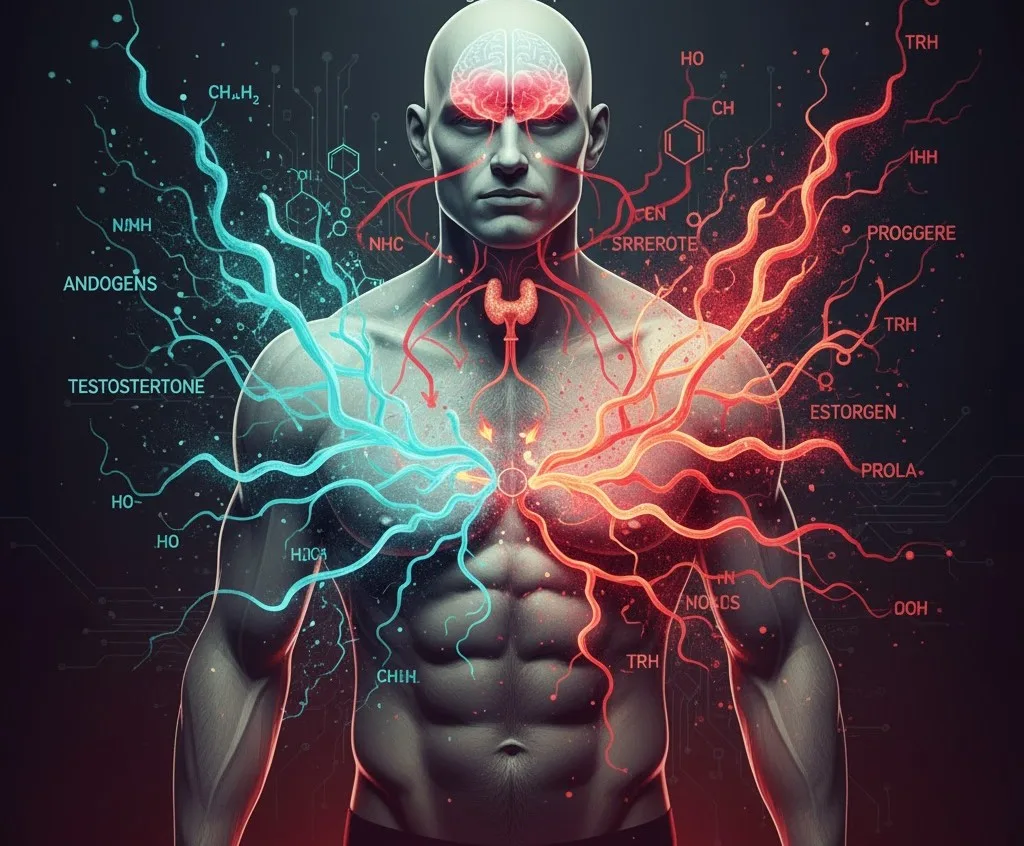Question: Does Somatropin (often referred to as "Soma" in fitness circles) contribute to or worsen gynecomastia?
Answer: Yes, according to recent insights, the use of Somatropin can indeed have a significant impact on hormonal balance, potentially exacerbating or even inducing gynecomastia.
Gynecomastia, the benign enlargement of male breast tissue, is primarily caused by an imbalance between estrogen and androgens (male hormones), with estrogen activity becoming dominant. While often associated with anabolic steroid use, the role of Human Growth Hormone (HGH) or Somatropin in this condition is gaining attention due to its complex interactions within the endocrine system.
Here's a breakdown of the proposed mechanism by which Somatropin can lead to or worsen gynecomastia:
The Hormonal Cascade Initiated by Somatropin
-
Thyroid Hormone Modulation: Somatropin administration is observed to increase the peripheral conversion of Thyroxine (T4), a less active thyroid hormone, into Triiodothyronine (T3), its more potent counterpart. Concurrently, overall T4 levels may decrease. This shift can create an "induced hyperthyroidism" state, as the body's thyroid hormone profile is altered.
-
Hypothalamic-Pituitary-Thyroid Axis Response: The body's intricate feedback loops then kick into gear. The altered thyroid hormone levels can stimulate the pituitary gland to secrete Thyroid-Stimulating Hormone (TSH). This, in turn, can trigger the hypothalamus to release Thyrotropin-Releasing Hormone (TRH) in an attempt to stabilize thyroid function and compensate for perceived imbalances.
-
Prolactin Surge: Crucially, TRH doesn't just act on the thyroid axis. It also influences the lactotroph cells located in the anterior pituitary gland. The increased TRH activity on these cells leads to a notable elevation in prolactin levels. Prolactin is a hormone primarily associated with lactation in women, but in men, excessively high levels can have significant endocrine effects.
-
Androgen-Estrogen Receptor Imbalance: The elevated prolactin levels are believed to be a key driver in the development of gynecomastia. High prolactin is implicated in causing a detrimental shift in the sensitivity and number of sex hormone receptors:
-
Decreased Testosterone and Androgen Receptors: This means that even if testosterone levels are adequate, the body's tissues become less responsive to these male hormones, effectively reducing their impact.
-
Increased Estrogen and Progesterone Receptors: Simultaneously, there is an upregulation or increased sensitivity of estrogen and progesterone receptors. This makes the body's tissues, including breast tissue, more responsive to the effects of even normal levels of estrogen and progesterone.
-
-
The Result: Estrogen Dominance and Gynecomastia: This combined effect—reduced androgenic signaling and enhanced estrogenic/progestogenic signaling—creates an environment of functional estrogen dominance at the tissue level. This imbalance is the direct physiological trigger for the development or exacerbation of gynecomastia.
Conclusion
While Somatropin is used for various medical conditions and sometimes misused for performance enhancement, its potential to induce or worsen gynecomastia through this complex hormonal pathway involving thyroid hormones, prolactin, and sex hormone receptor modulation is a critical consideration. Individuals considering or currently using Somatropin should be aware of these potential side effects and always consult with a healthcare professional to understand the risks and manage their endocrine health.

